March 13th Scots Book of Days
MARCH 13 1395 Death of poet and historian John Barbour, author of “The Bruce” recounting the history of King Robert I.
1405 James 1st Stewart, King of Scots captured as prisoner by English and sent to London, Robert III Stewart King Scots, attempted to send his son, Prince James (later James at age 11 years auld, to France ) for safekeeping from Duke of Albany, Robert’s brother and James’ uncle. English capture ship TG 17-251) Henry 4th King England James 1st.
Sched of Winsor Castell In Engelandt dat Earl v.d. Linderh met Eygen Eandt gemacckt. Site of James 1st.
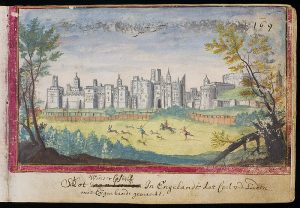
Sched of Winsor Castell In Engelandt dat Earl v.d. Linderh met Eygen Eandt gemacckt. Site of James held prisoner.
Future James I captured by the English – 1406. With Scotland divided, James is sent to safety in France. After a month on Bass Rock James is captured and handed over to the English. James’ father, King Robert III, allegedly died of grief on hearing the news. Video: A history of Scotland: Language is Power.
http://www.bbc.co.uk/scotland/history/the_stewarts/future_james_i_captured_by_the_english/
These are BBC shows about Scotland’s history.
1599 never happened in Scotland. The dates of January 1 1599 to March 24 1599 never happened. Nope. Nothing. The time that never was. In Scotland, only. Before 1600, the Scot’s calendar ran from March 25 to March 24 (basically the Spring equinox).
1647 Harlech Castle the last Royalist stronghold in Wales surrendered to the Parliamentary forces.
1689 Edinburgh convention of the Scottish Estates. Adherents to James 7th (of Scots) exiled King were the minority, and timid, procrastination, folly, efforts to prevent William Prince of Orange becoming King, failed. Graham of Claverhouse, Viscount Dundee, came to the convention and alleged the Covenanters trying to assassinate him and Sir George Mackenzie, another James 7th advocate. Dundee left, as did the rest of James’ supporters, leaving unanimous the resolutions of the convention. Tytler’s Britannica.
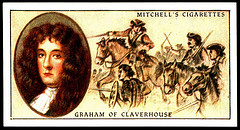 1st Viscount Dundee was John Graham, ‘Bonnie Dundee’, who married Jean Cochrane, niece of William Cochrane 7th Earl of Dundonald. He was also Laird of Claverhouse an estate in the City of Dundee.
1st Viscount Dundee was John Graham, ‘Bonnie Dundee’, who married Jean Cochrane, niece of William Cochrane 7th Earl of Dundonald. He was also Laird of Claverhouse an estate in the City of Dundee.
1751 did not occur in England, Ireland, British North America, and British colonies, as 1751 only had 282 days due to the Calendar Act of 1750. But 1751 did occur in Scotland, as 1751 had 365 days. The world’s oldest lunar “calendar” is in an Aberdeenshire field.
1781 British astronomer Frederick William Herschel discovers the planet Uranus. BBC in astronomy grew stronger after he made the acquaintance of the English Astronomer Royal Nevil Maskelyne. In 1772 Maskelyne proposed to the Royal Society what was to become known as the Schiehallion experiment (named after the mountain on which it was performed), for the determination of the Earth’s density using a plumb line. He was not the first to suggest this, Pierre Bouguer and Charles-Marie de la Condamine having attempted the same experiment in 1738.
Maskelyne performed his experiment in 1774 on Schiehallion in Perthshire, Scotland,[17] the mountain being chosen due to its regular conical shape which permitted a reasonably accurate determination of its volume. The apparent difference of latitude between two stations on opposite sides of the mountain were compared with the real difference of latitude obtained by triangulation.
From Maskelyne’s observations Charles Hutton deduced a density for the earth 4.5 times that of water (the modern value is 5.515).
1881 Tsar Alexander II is assassinated in St Petersburg, ending reform and causing the scapegoating of Jews. BBC. Tsar Alexander II’s only daughter, Grand Duchess Maria Alexandrovna married one of Queen Victoria’s sons – Prince Alfred, Duke of Edinburgh, (clans Stewart, Drummond) later Duke of Saxe-Coburg and Gotha.
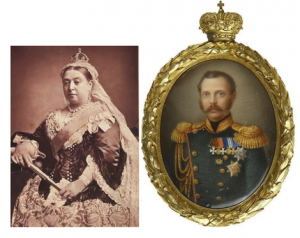 Queen Victoria and Tsar Alexander II.
Queen Victoria and Tsar Alexander II.
1833 Joseph Smith the Prophet, at Kirtland, Ohio (clan Mack of Inverness, Malcolm King of Scots), Doctrine and Covenants. The Prophet was at this time engaged in the translation of the auld Testament. Having come to that portion of the ancient writings called the Apocrypha, he inquired of the Lord and received this instruction. There are many things contained therein that are true, and it is mostly translated correctly.
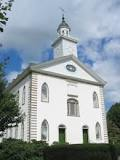 Kirtland Temple, opened 1833, sandstone and stucco. The Church of Jesus Christ of Latter-day Saints
Kirtland Temple, opened 1833, sandstone and stucco. The Church of Jesus Christ of Latter-day Saints
1884 The Battle of Tamai. East of the Sudan, Africa, near the Red Sea coast. Major General Graham. The Highlanders wore grey jackets and kilts. All wore pith helmets. 1st Battalion Black Watch 1st Battalion Gordon Highlanders. The first step was to dispatch the Black Watch to occupy a zeriba (a thorn branch enclosure). On 12th March 1884 the rest of General Graham’s force marched into the zeriba to join the Black Watch. Two brigade squares were formed with the 2nd Brigade leading and the 1st Brigade marching on a path behind and to the right of the 2nd Brigade.
The leading 2nd Brigade comprised 1st Black Watch, with Gardiner and Gatling guns, the brigade commanded by General Davis. The 1st Brigade comprised 1st Gordon Highlanders, and was commanded by Colonel Redvers Buller. General Graham and his staff accompanied the leading 2nd Brigade.
 The 2nd Brigade square under heavy attack in the distance. The 1st Brigade square in the right foreground. Illustration by F Villiers reporter for the Graphic.
The 2nd Brigade square under heavy attack in the distance. The 1st Brigade square in the right foreground. Illustration by F Villiers reporter for the Graphic.
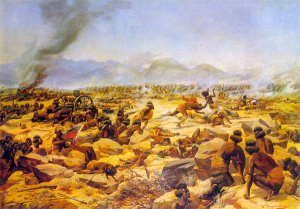 The Sudanese with the Gatling Gun captured after the 2nd Brigade square broke – Painting by Douglas Giles. Colonel Buller’s 1st Brigade now came up on the right of the 2nd Brigade to the lip of the ravine. Not until now engaged and in good order, Buller’s battalions opened a heavy fire on the Mahdist tribesmen. The 2nd Brigade was reformed by General Graham and his staff, fresh supplies of ammunition being brought forward. The brigade, with the Black Watch taking the lead, moved back to engage the Mahdists at the edge of the ravine, retaking the abandoned guns.
The Sudanese with the Gatling Gun captured after the 2nd Brigade square broke – Painting by Douglas Giles. Colonel Buller’s 1st Brigade now came up on the right of the 2nd Brigade to the lip of the ravine. Not until now engaged and in good order, Buller’s battalions opened a heavy fire on the Mahdist tribesmen. The 2nd Brigade was reformed by General Graham and his staff, fresh supplies of ammunition being brought forward. The brigade, with the Black Watch taking the lead, moved back to engage the Mahdists at the edge of the ravine, retaking the abandoned guns.
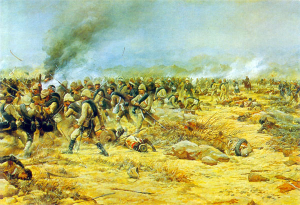 The 1st Battalion Black Watch and 1st Battalion York and Lancaster Regiment
in the 2nd Brigade square at the Battle of Tamasi. Painting by Douglas Giles. General Graham’s intention was to follow up his two successes, at El Teb and Tamai, by sending his cavalry across country to Berber on the Nile, but he was ordered by the British Government to disembark his force and return to Egypt, leaving a garrison in Suakin.
The 1st Battalion Black Watch and 1st Battalion York and Lancaster Regiment
in the 2nd Brigade square at the Battle of Tamasi. Painting by Douglas Giles. General Graham’s intention was to follow up his two successes, at El Teb and Tamai, by sending his cavalry across country to Berber on the Nile, but he was ordered by the British Government to disembark his force and return to Egypt, leaving a garrison in Suakin.
The second VC (Victoria Cross) went to Private Edwards of the Black Watch for vigorously defending the mules he was in charge of and assisting his gun team to bring their gun into action.
http://www.britishbattles.com/egypt-1882/tamai.htm
1884 – The Siege of Khartoum, Sudan, on the Nile, begins, ending on January 26, 1885. Khartoum forces led by British General Charles George Gordon who was sent to evacuate the city of 20,000 Turkish, Egyptian, families and occupants, defended by a garrison of 7,000 Egyptian and loyal Sudanese troops.. After a ten-month siege, the Mahdists stormed Khartoum and beheaded the entire 7,000 garrison. Since the 1882 Anglo-Egyptian War, the British military presence ensured that Egypt remained a de facto British protectorate. However, the administration of Sudan was considered a domestic matter, and left to the Khedive’s government. The Prime Minister William Gladstone and his War Secretary Lord Hartington didn’t wish to become involved in Sudan. Accordingly, the British representative in Egypt, Sir Evelyn Baring, persuaded the Egyptian government that all their garrisons in Sudan should be evacuated. Contrast the retarded effort, in 1884, to relieve Khartoum with the aggressive effort of 1st Earl Roberts to relieve Kandahar in 1880, then later the retarded effort to relieve Benghazi and attach on the American Ambassador Stevens September 2012.
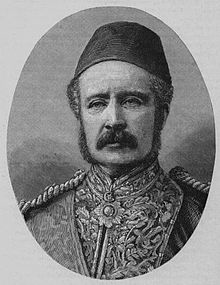 General Gordon. (Scots Gordon clan) In 1879 Gordon went to Darfur to suppress the slave traders. European initiatives against the slave trade caused an economic crisis in northern Sudan.
General Gordon. (Scots Gordon clan) In 1879 Gordon went to Darfur to suppress the slave traders. European initiatives against the slave trade caused an economic crisis in northern Sudan.
1901 Benjamin Harrison (Scots) (August 20, 1833 – March 13, 1901) died 23rd President, 1889-93: His mother, Elizabeth Irwin, had Ulster-Scots roots through her two great-grandfathers, James Irwin and William McDowell. Harrison was born in Ohio, served as a brigadier general in the Union Army, then Indiana politics, and the White House. Benjamin was a grandson of President William Henry Harrison and great-grandson of Benjamin Harrison V, a Virginia governor and signer of the Declaration of Independence. While at Farmer’s College, Harrison met Caroline Lavinia Scott, the daughter of the University’s president, Rev. Dr. John Witherspoon Scott, (Yale circa 1822) a Presbyterian minister.
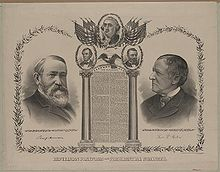 Harrison-Morton campaign poster. Witherspoon is the ancestor of Reese Witherspoon, and both are descendants of Andrew Stewart, 2nd Lord Ochiltree.
Harrison-Morton campaign poster. Witherspoon is the ancestor of Reese Witherspoon, and both are descendants of Andrew Stewart, 2nd Lord Ochiltree.
1941 The Clydebank Blitz – 1941. Scotland’s centres of heavy industry become a target of German bombing raids. Over the nights of the 13th and 14th March 1941 Clydebank, Glasgow, was repeatedly bombed in a sustained campaign that resulted in hundreds of casualties. Video: Reporting Scotland, 2009.
http://www.bbc.co.uk/scotland/history/modern_scotland/clydebank_blitz/
1987 Heavenly Pursuits set in Glasgow, Scotland. Blessed Edith Semple School. (CLAN SEMPLE) Glasgow Cathedral, St. Alphonsus Church, Queen’s Park School, Glasgow Herald, Glasgow City Chambers (representing the Vatican), Glasgow Queen Street railway station.
1969 – Apollo program: Apollo 9 returns safely to Earth after testing the Lunar Module.
 Commander Jim McDivitt, Command Module Pilot David Scott, and Lunar Module Pilot Rusty Schweickart,
Commander Jim McDivitt, Command Module Pilot David Scott, and Lunar Module Pilot Rusty Schweickart,
Utah Standard News depends on the support of readers like you.
Good Journalism requires time, expertise, passion and money. We know you appreciate the coverage here. Please help us to continue as an alternative news website by becoming a subscriber or making a donation. To learn more about our subscription options or make a donation, click here.
To Advertise on UtahStandardNews.com, please contact us at: ed@utahstandardnews.com.


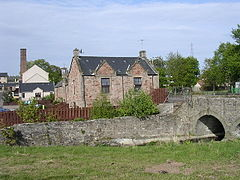
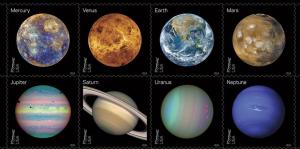
Comments - No Responses to “March 13th Scots Book of Days”
Sure is empty down here...